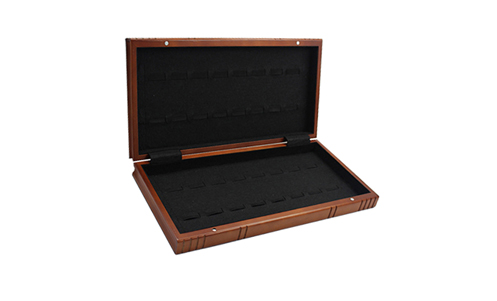Home >> News >> Industry News
11th. March, 2021
How To Play Backgammon Board Game(2)
Blocks
Players can deliberately set a block (multiple points close together, with two or more chips) as a defense strategy to hinder the opponent's progress with a certain number of chips.
Hits, and re-entries
A player can deliberately try an offensive tactic by aiming at a specific spot on the board occupied by a single chip of his or her opponent, called a taint. When the player falls on that spot, he or she hits the opponent's spot and sends it to the pole.
Then, the opponent must roll the dice, starting from the point furthest from the final goal (home plate quadrant), and bring the piece on the crossbar back into the game before moving any other pieces.
If the player rolls the dice on the digital block chip in the bar, return to the board (due to the existence of a pile of two or more chips of the first player at the landing point) the opponent is punished and waits for the next one to try again.
Rolling doubles
The player who rolls the dice effectively repeats the numbers shown on the pair of dice twice. For example, a player who rolls two 6s can get 4 rounds of 6 each. He or she can use any combination of chips to achieve his or her greatest advantage.
Bearing off
Only when a player puts all his or her chips into his or her home quadrant can he or she begin to carry their chips and stack them on a special shelf usually provided on the side frame of the board. This is also determined by the result of rolling the dice. The player who first removes all the chips from the board is the winner.
Doubling
All backgammon comes with a double cube. This is usually used in gambling or in a match involving multiple games. The winner is determined based on the maximum number of games won.
You can use double cubes at any time during the game. Allow those players who think they are in a good position to raise their stakes and get between 2 and 64 games with only one victory.
The doubling cube contains the numbers 2, 4, 8, 16, 32, and 64. The player shows how much he or she has increased by placing the squares with corresponding numbers on the front.
If the opponent refuses to accept the increased stakes, he or she abandons the game. If the opponent accepts the increased bet, he owns the cube and can double the bet, if the trend then turns to his or her advantage.
Gammons and backgammon
At the end of the game, if the losing player cannot afford even one chip, he or she will lose two games (or twice the value of the doubling cube).
To make matters worse, if the loser cannot afford any of his chips, and there is one chip left on the bar or the opponent's home quadrant, then he or she will lose three games.
Optional rules
Automatically double
If you roll the same number in the first round, the doubling cube will automatically become two. Players who win in this game will eventually register for at least two wins.
Beaver
When the player accepts a double and immediately doubles while keeping the doubling cube. Then, the opponent can choose to accept and continue the game, or refuse and abandon the game-just like a regular double.
Backgammon Glossary / Jacoby rule
Gammons and backgammons are counted as a victory unless the doubling cube is removed. This encourages players to use doubling cubes in every game to speed up the game.
We are backgammon suppliers. If you are interested in our products, please feel free to contact us.

Previous: None
NEXT: None
Phone: +86 18774308281
E-mail: [email protected]
No. 13 Zhan North Road, Baisha Village, Humen Town,Dongguan City, Guangdong Province, China